
Tired of constantly being on guard against cyber threats? Do you ever wonder how hackers manage to trick even the most vigilant individuals? In today’s digital age, phishing attacks have become more cunning and sophisticated than ever before.
It’s time to dive deep into the anatomy of a phishing attack and learn how to spot and avoid them. By understanding the tactics employed by these malicious actors, you can better protect yourself and your sensitive information.
From deceptive emails that appear legitimate to fraudulent websites designed to steal your personal data, the world of cybercrime is filled with hidden dangers. But fear not! This article will equip you with the knowledge and tools necessary to stay one step ahead.
So, buckle up and get ready to uncover the secrets of phishing attacks and how to outsmart them. Your digital safety depends on it.

Key Takeaways
- Phishing attacks are sophisticated attempts to deceive individuals into sharing sensitive information, and understanding the tactics used by cybercriminals is crucial in spotting and avoiding them.
- There are different types of phishing attacks, including email phishing, spear phishing, whaling attacks, vishing, and smishing. Each type targets individuals through various methods such as emails, phone calls, or text messages.
- To spot and avoid phishing attacks, it is important to be cautious of messages asking for personal information, verify the source, and never share sensitive information unless you initiated the contact.
- Identifying phishing emails and websites involves paying attention to red flags such as urgent language, suspicious links or attachments, poor grammar or spelling errors, deceptive URLs, and inconsistent branding. It is also important to report suspicious emails and phishing scams to protect yourself and others.
Introduction
Phishing attacks are sneaky attempts to deceive individuals into sharing sensitive information. This article aims to equip you with the knowledge and skills to identify and evade such scams. Understanding the anatomy of a phishing attack is crucial in spotting and avoiding them effectively.
In this introduction, we will provide an overview of what phishing attacks are and why they are significant. Phishing attacks involve cybercriminals posing as legitimate entities, such as banks or online services, to trick individuals into revealing personal information like passwords or credit card details. These scams can lead to identity theft, financial loss, and even compromise of sensitive data.
By familiarizing yourself with the tactics used by cybercriminals and learning how to recognize the signs of a phishing attack, you can protect yourself and your personal information from falling into the wrong hands.
Understanding Phishing Attacks
In this section, you’ll learn about phishing attacks and how they work.

You’ll understand what phishing is and how it can affect you.
By understanding the mechanics of phishing attacks, you’ll be better equipped to protect yourself from falling victim to them.
What is Phishing?
Phishing, in simple terms, is a fraudulent practice where scammers impersonate legitimate organizations to deceive individuals into revealing sensitive information like passwords, credit card details, or social security numbers.
These scammers often send phishing emails that appear to be from trustworthy sources, such as banks or online retailers, tricking unsuspecting victims into clicking on malicious links or downloading harmful attachments.

Falling victim to a phishing scam can lead to identity theft, financial loss, or even unauthorized access to personal accounts.
It’s crucial to stay vigilant and report phishing attempts to the appropriate authorities. By understanding the different types of phishing and being cautious of suspicious emails, you can protect yourself from falling into these traps.
How Phishing Attacks Work
Phishing attacks work by exploiting human vulnerabilities through spoofed emails and websites, as well as social engineering tactics. Scammers create emails and websites that appear legitimate, tricking unsuspecting individuals into divulging personal information such as passwords, credit card details, or social security numbers. They often use urgent or enticing language to create a sense of urgency and manipulate their targets.
To avoid falling prey to phishing attacks, it is important to verify the authenticity of emails and websites. Never share sensitive information via email, and be cautious of any suspicious requests for personal information. Stay vigilant and trust your instincts to protect yourself from these deceitful scams.

Types of Phishing Attacks
In this discussion, you’ll explore different types of phishing attacks. These include:
- Email phishing
- Spear phishing
- Whaling attacks
- Vishing (voice phishing)
- Smishing (SMS phishing)
You’ll learn how these attacks work and how to recognize and prevent them. By understanding these key points, you’ll be better equipped to protect yourself from falling victim to these deceptive tactics.
Email Phishing
Watch out for suspicious emails claiming to be from your bank or other trusted institutions; they could be phishing attempts trying to steal your personal information.
Email phishing is one of the most common and effective methods used by cybercriminals. These phishing emails often appear legitimate, with professional-looking logos and convincing language. They may ask you to click on a link or provide personal information, such as your login credentials or credit card details.

Remember, your bank or any other reputable institution will never ask for sensitive information via email. Be cautious of emails that create a sense of urgency or threaten consequences if you don’t act quickly.
If you receive a suspicious email, do not click on any links or provide any personal information. Instead, report the phishing email to your email provider and delete it immediately.
By staying vigilant and informed, you can protect yourself from falling victim to a phishing attack.
Spear Phishing
Spear phishing is a highly personalized phishing attack that is tailored to deceive a specific individual or organization. Unlike regular phishing attacks that cast a wide net, spear phishing is more focused and convincing. Attackers gather detailed information about their targets, such as their job title, interests, or recent activities, to craft a convincing message. They may even impersonate a colleague or a trusted source, making it harder to spot the malicious intent.

To avoid falling victim to spear phishing, it is crucial to be vigilant and skeptical of any unexpected or suspicious emails, especially those requesting personal information or urging immediate action. By understanding the anatomy of a phishing attack and staying cautious, you can effectively spot and avoid spear phishing attempts.
Whaling Attacks
Picture yourself as a small fish swimming in the vast ocean, unaware of the looming danger of a colossal whale lurking beneath the surface, ready to strike at any moment. This is what whaling attacks feel like in the world of cybersecurity.
Similar to spear phishing, whaling attacks target specific individuals, usually high-ranking executives or decision-makers, with the goal of stealing sensitive information or gaining unauthorized access to systems.
Phishing emails are carefully crafted to deceive their targets, often using social engineering techniques to appear legitimate. For example, an attacker might impersonate a trusted colleague or use urgent language to create a sense of urgency.

By familiarizing yourself with phishing email examples and understanding the tactics used in whaling attacks, you can better protect yourself and your organization from falling victim to these malicious schemes.
Vishing (Voice Phishing)
Vishing, also known as voice phishing, involves the use of phone calls to deceive individuals into disclosing sensitive information or performing certain actions, posing a significant threat to cybersecurity. Unlike traditional phishing attacks that rely on emails or text messages, vishing attackers use the power of their voice to manipulate and trick their victims.
These attackers often pretend to be someone they are not, such as a trusted organization or a reputable individual, in order to gain the target’s trust. They may ask for personal information like passwords, credit card details, or even convince the victim to transfer money.
To avoid falling victim to vishing, it is crucial to be cautious when receiving unexpected phone calls. Always verify the caller’s identity before sharing any sensitive information and never provide personal details over the phone unless you initiated the call.

Stay vigilant and stay safe from the dangers of vishing and other forms of phishing attacks.
Smishing (SMS Phishing)
Little did you know, your innocent text message was actually a smishing attempt, designed to trick you into revealing your personal information.
Smishing, also known as SMS phishing, is a type of phishing attack that targets individuals through text messages. These messages often appear to be from a trusted source, such as a bank or a service provider, and contain a link or a phone number to call.
The goal is to persuade you to click on the link or call the number and provide sensitive information like your social security number or credit card details.

To spot and avoid smishing attacks, be cautious of messages asking for personal information, especially if they seem urgent or threatening. Always verify the source of the message before taking any action, and never click on suspicious links or provide sensitive information through text messages.
Stay vigilant and protect yourself from smishing attempts.
The Anatomy of a Phishing Email
When it comes to spotting a phishing email, there are a few key points you need to be aware of.
First, pay attention to the sender information and be cautious of any spoofed identities.

Second, be wary of urgent calls-to-action and emotional manipulation tactics used to manipulate you into taking immediate action.
Lastly, always be on the lookout for suspicious links and attachments, as well as poor grammar and spelling errors, which are common red flags of a phishing attempt.
Stay vigilant and remember to think twice before clicking on anything suspicious.
Sender Information and Spoofed Identities
Spotting a phishing attack becomes easier when you can identify fake sender information and spoofed identities. When it comes to sender information, pay close attention to the email address. Phishing emails often use addresses that are slightly different from legitimate ones, with small variations or misspellings. Always double-check the sender’s email address to ensure it matches the official one.
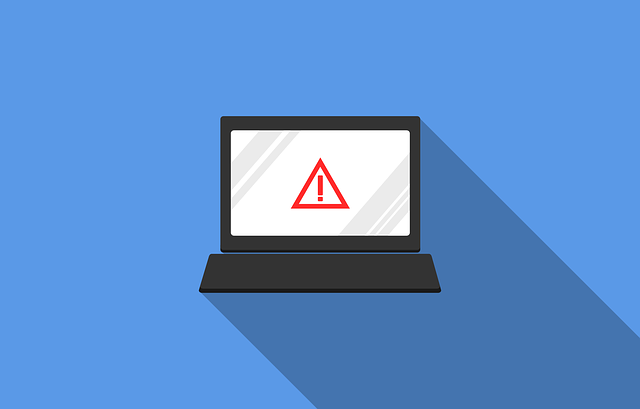
Another red flag to watch out for is spoofed identities. Phishers can make it appear as if the email is coming from a trusted source, such as a bank or a well-known company. They use logos and formatting to make it seem legitimate. However, if something feels off or if the email requests personal information or urges immediate action, it’s best to ignore it and report it as a phishing attack.
By staying vigilant and being aware of sender information and spoofed identities, you can better spot and avoid phishing attacks.
Urgent Calls-to-Action and Emotional Manipulation
Beware of urgent calls-to-action and emotional manipulation tactics used by phishers. These tactics are designed to create a sense of urgency and exploit your emotions. They make it harder for you to think critically and spot a phishing attack.
Phishers often use urgent language, such as ‘Your account will be suspended if you don’t act now!’ or ‘Your personal information is at risk, click here to secure it.’ They may also try to manipulate your emotions by using fear, greed, or curiosity to get you to click on a malicious link or provide sensitive information.
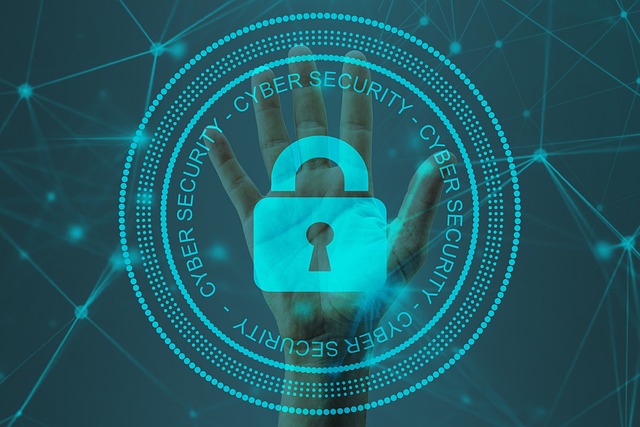
To avoid falling victim to these tricks, always take a moment to pause and evaluate the situation. Verify the legitimacy of the request through a trusted source or by contacting the company directly.
Don’t let urgent calls-to-action and emotional manipulation cloud your judgment when it comes to protecting yourself from phishing attacks.
Suspicious Links and Attachments
Clicking on suspicious links or opening attachments from unknown sources can lead to devastating consequences. For example, unknowingly downloading malware that steals your personal information and puts your financial security at risk.
Imagine receiving an enticing email promising a free vacation package. However, clicking on the attached link leads to a ransomware attack that locks all your files until you pay a hefty sum.

It is crucial to be cautious and vigilant when encountering suspicious links or attachments in emails, text messages, or social media posts. Always hover over the link to check its destination before clicking, and only click on links from trusted sources.
Be wary of unexpected attachments, especially if they are executable files like .exe or .zip files. To avoid phishing attacks, remember to never provide personal information or login credentials through suspicious links or attachments.
Stay alert and keep your digital world safe.
Poor Grammar and Spelling Errors
Poor grammar and spelling errors in emails, text messages, or social media posts can be misleading. However, they can also indicate a potential scam or fraudulent scheme. Phishing emails, for instance, often contain these errors because scammers may not be proficient in the targeted language. These mistakes serve as red flags, alerting you to the potential danger of the email.
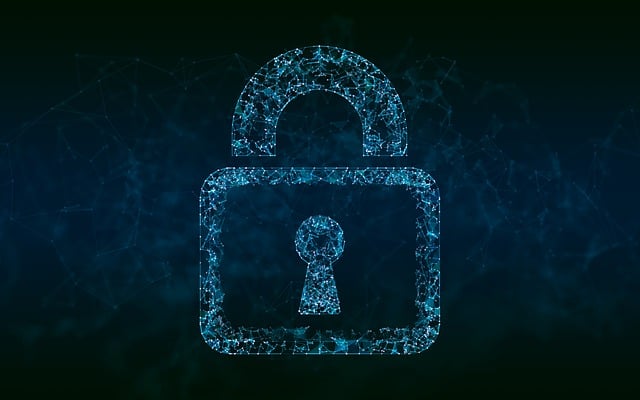
If you receive a suspicious email with obvious grammar or spelling mistakes, it’s crucial to report it as a scam email. By doing so, you help protect others from falling victim to phishing scams. Stay vigilant and educate yourself about the signs of phishing to enhance your phishing awareness and avoid becoming a victim.
Identifying Phishing Websites
When it comes to identifying phishing websites, there are a few key points to keep in mind.
First, pay attention to deceptive URLs and redirects. Phishing websites often use URLs that mimic legitimate websites to trick you into entering sensitive information.
Second, be wary of websites that lack SSL certificates, as these certificates ensure secure communication between your browser and the website.

Lastly, watch out for cloned websites and login pages that may have inconsistent branding and design. These are often signs of a phishing attempt.
Deceptive URLs and Redirects
To protect yourself from falling victim to a phishing attack, it’s crucial to stay vigilant and be wary of misleading URLs and sneaky redirects. Criminals often use deceptive URLs in their scam emails to trick unsuspecting victims into thinking they are visiting a legitimate website.
These URLs may mimic the appearance of well-known websites or use slight variations in spelling or domain names to deceive users.
Additionally, phishing emails may contain embedded links that redirect you to a malicious website without your knowledge. These redirects can be triggered by clicking on an innocent-looking link within the email.

Always hover over the link before clicking to check if the URL matches the website you expect.
By being cautious and double-checking URLs and redirects, you can avoid falling into the trap of a phishing attack.
Lack of SSL Certificates
One important aspect to consider when browsing the web is the presence of SSL certificates. SSL certificates play a vital role in ensuring the security of your online interactions. They are a key defense against phishing attacks. SSL certificates provide a secure, encrypted connection between your browser and the website you are visiting. This makes it difficult for attackers to intercept or manipulate your data.
By spotting the absence of SSL certificates, you can avoid falling victim to phishing attempts. When visiting a website, look for the padlock icon in the address bar. Also, ensure that the URL starts with ‘https’ instead of ‘http.’ These indicators indicate that the website has a valid SSL certificate in place.

By being vigilant and recognizing the importance of SSL certificates, you can protect yourself from falling into the traps of phishing attacks.
Cloned Websites and Login Pages
Beware of websites or login pages that appear identical to legitimate ones but are actually clones, designed to deceive you and steal your personal information.
These deceptive websites are like cunning chameleons, blending seamlessly into their surroundings, making it crucial for you to stay vigilant and double-check the authenticity of the website before entering any sensitive information.
Phishing attacks often involve the use of cloned websites and login pages to trick unsuspecting users into divulging their credentials. Attackers may send phishing emails that direct you to these fraudulent sites, mimicking the appearance of trusted entities like banks or online stores. Once you enter your login details, the attackers capture them and gain unauthorized access to your accounts.

To protect yourself, always scrutinize website URLs, look for SSL certificates, and be cautious of any suspicious emails or websites requesting your personal information.
Stay one step ahead of phishing attacks by being aware of the tactics used to deceive you.
Inconsistent Branding and Design
Now that you understand the dangers of cloned websites and login pages, let’s dive into another important aspect of phishing attacks: inconsistent branding and design.
When it comes to spotting a phishing attempt, paying attention to the details is crucial. Cybercriminals often use email fraud tactics, such as sending a PayPal phishing email, to trick you into revealing personal information.

One common red flag is an email that contains a phishing link disguised as a legitimate website. However, scammers may not put much effort into replicating the authentic brand’s design, resulting in inconsistencies in logos, fonts, or colors.
These inconsistencies can be subtle, but they are telltale signs of a spear phishing attack. Always be vigilant and scrutinize emails and websites carefully to avoid falling victim to these deceptive tactics.
Red Flags to Spot a Phishing Attempt
When it comes to identifying phishing attempts, there are several red flags you should be aware of.
- First, be cautious of unsolicited emails and messages asking for personal or financial information.
- Second, be wary of any requests for your sensitive data, such as passwords or credit card numbers.
Pay attention to any urgent or threatening language, as well as offers that seem too good to be true.
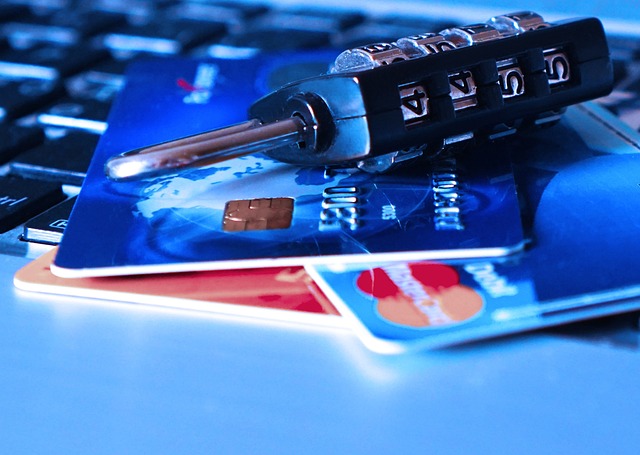
By staying vigilant and recognizing these warning signs, you can better protect yourself from falling victim to a phishing attack.
Unsolicited Emails and Messages
Receiving unsolicited emails and messages can be a real headache, but it’s important to stay vigilant and not get caught in their sneaky traps.
One common type of phishing attack is through unsolicited emails. These emails may appear to come from trusted sources, such as your bank or a well-known company, but they are actually designed to trick you into revealing personal information or clicking on malicious links.
If you receive a suspicious email, be cautious. Look out for spelling and grammar mistakes, generic greetings, urgent requests for personal information, or unusual email addresses. Never click on any links or download attachments from unsolicited emails.

Instead, report phishing attempts to your email provider and delete the scam email immediately. Remember, staying cautious and informed is key to protecting yourself from phishing attacks.
Requests for Personal or Financial Information
Be cautious if someone asks for your personal or financial information, as it is like handing over the keys to your digital kingdom.
Phishing emails often lure unsuspecting victims by pretending to be a trusted source, such as a bank or government agency.
They may request your personal information, such as your social security number or date of birth, or financial information, like your credit card details or online banking credentials.

Remember, legitimate organizations will never ask you to provide sensitive information via email.
If you receive a suspicious email, do not click on any links or attachments. Instead, report the phishing attempt to the appropriate authorities and delete the email immediately.
By being vigilant and cautious, you can protect yourself from falling victim to phishing attacks and avoid compromising your personal and financial security.
Urgency and Threats of Consequences
Don’t let the urgency and threats of consequences in a suspicious email sway you into giving away your personal or financial information. Phishing emails are designed to trick you into revealing sensitive data or downloading malware. Understanding their meaning and tactics is crucial to protecting yourself online.

Phishing scams come in various forms, such as emails pretending to be from a trusted institution or a friend in need. These attacks exploit psychological triggers like urgency and threats to manipulate victims. They create a sense of panic, making you act without thinking.
Remember, reputable organizations will never ask for sensitive information via email. Stay vigilant and be cautious of any unexpected requests. Regular cybersecurity training can also help you recognize and avoid falling victim to these deceptive tactics.
Offers that Sound Too Good to Be True
Beware of offers that seem too good to be true, as they often turn out to be a wolf in sheep’s clothing. In the world of phishing and email scams, scammers use enticing offers to lure unsuspecting victims into their trap.
These scam emails may promise unbelievable discounts, exclusive opportunities, or even large sums of money for minimal effort. Remember, if something sounds too good to be true, it probably is. Phishing attacks rely on exploiting people’s desire for a good deal or easy money, making them vulnerable to manipulation.

To protect yourself, never click on suspicious links or provide personal information in response to these tempting offers. Instead, report phishing attempts to the appropriate authorities and educate yourself on how to identify a scam email.
Stay vigilant and don’t fall for offers that are too good to be true.
How to Avoid Falling for Phishing Scams
To avoid falling for phishing scams, it’s important to verify email senders and URLs before taking any action.
Never click on suspicious links or download attachments from unknown sources, as these could contain malware or lead to fake websites.

Additionally, keeping your software and antivirus programs updated is crucial in protecting yourself from potential security threats.
Lastly, consider using multi-factor authentication (MFA) whenever possible to add an extra layer of security to your online accounts.
Verify Email Senders and URLs
To protect yourself from falling prey to phishing attacks, it is important to verify email senders and website URLs. Phishing emails often masquerade as legitimate messages from trusted organizations. By verifying the email sender, you can confirm the message’s legitimacy. Look out for suspicious signs like misspellings or unfamiliar email addresses.
In addition, exercise caution when dealing with URLs in emails or on websites. Phishing attacks frequently employ deceptive URLs that mimic genuine websites. Before clicking on any links, hover over them to reveal the actual destination. If the URL appears suspicious or different from what you expected, it is best to avoid clicking on it.

By taking the time to verify email senders and URLs, you can significantly reduce the risk of falling victim to a phishing attack.
Never Click on Suspicious Links or Download Attachments
It is important to never click on suspicious links or download attachments. Doing so can put your computer’s security at risk and potentially harm you. Phishing emails often contain these types of malicious links or attachments. These can compromise your personal information and the security of your device. These links may lead you to fake websites that look legitimate. They trick you into entering your login credentials or financial details. Downloading attachments from suspicious emails can also introduce malware or viruses onto your device. To protect yourself, always be cautious and verify the sender’s email address and the URL before clicking on any links or downloading any attachments. If you receive a phishing email, report it to your email provider or the appropriate authority. By understanding the anatomy of a phishing attack and being vigilant, you can avoid falling victim to these scams.
Keep Software and Antivirus Updated
Keeping your software and antivirus updated is crucial for maintaining the security of your device and reducing the risk of cyber threats. Studies have shown that outdated software accounts for 85% of all security breaches.
Phishing emails often contain malicious links or attachments that can exploit vulnerabilities in outdated software. This allows cybercriminals to gain unauthorized access to your device or steal sensitive information.

By regularly updating your software and antivirus, you ensure that any known security vulnerabilities are patched. This makes it harder for attackers to exploit them.
Additionally, updated antivirus software can identify and block phishing attempts. This provides an extra layer of protection against these types of attacks.
Remember to report phishing emails to your IT department or the appropriate authorities. Also, avoid clicking on suspicious links or downloading attachments from unknown sources. This further protects yourself from potential phishing threats.
Use Multi-Factor Authentication (MFA)
Take control of your online security by implementing multi-factor authentication (MFA). MFA adds an extra layer of protection to your logins and significantly decreases the chances of unauthorized access to your accounts.

With the increasing prevalence of phishing attacks, it’s crucial to be proactive in protecting your sensitive information. MFA requires users to provide multiple pieces of evidence to verify their identity. This can include a password, biometric data, or a unique code sent to a trusted device.
By requiring this additional step, MFA makes it much more difficult for attackers to gain access to your accounts, even if they manage to obtain your login credentials through a phishing attack.
So, whenever possible, enable multi-factor authentication on all your online accounts. This will help you spot and avoid phishing attacks and ensure the safety of your personal information.
Educating and Training Employees
To effectively educate and train your employees on how to avoid falling for phishing scams, there are three key points to consider.

First, raising awareness of phishing threats is crucial. This involves providing information on common phishing techniques and warning signs to look out for.
Second, conducting phishing simulation exercises can help employees identify and respond to potential phishing attacks in a safe environment.
Lastly, encouraging employees to report any suspected phishing attempts they come across can help prevent further attacks and improve overall security awareness within the organization.
Raising Awareness of Phishing Threats
By understanding the anatomy of a phishing attack, you can develop a heightened awareness of the threats you may encounter online.

One of the most common ways attackers try to deceive individuals is through phishing emails. These emails may appear to be from legitimate sources, such as banks or popular websites, and often include urgent requests for personal information. It is crucial to be cautious when encountering such emails and avoid clicking on any links or providing sensitive data.
Raising awareness about phishing attacks is essential in preventing them. Organizations can conduct regular training sessions to educate employees about the signs of phishing and how to report phishing attempts.
By staying informed and vigilant, you can protect yourself and others from falling victim to phishing threats.
Conducting Phishing Simulation Exercises
Now that you are aware of the dangers posed by phishing threats, it’s time to take action and protect yourself against them.
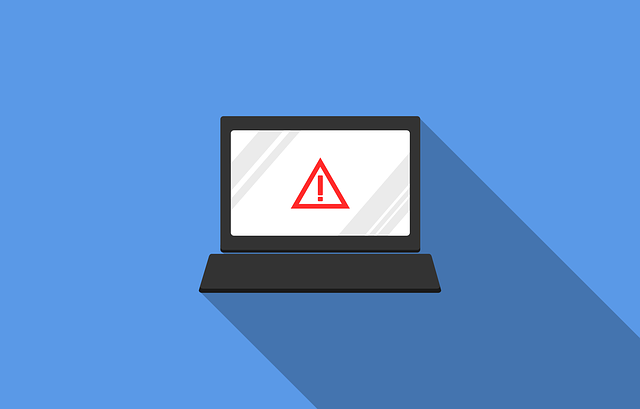
One effective way to do this is by conducting phishing simulation exercises. These exercises involve sending out mock phishing emails to employees or individuals to test their vulnerability to such attacks.
By simulating real-life phishing scenarios, you can educate and train individuals to recognize and report phishing attempts. Through these exercises, you can assess the level of awareness and preparedness within your organization or personal network.
It also provides an opportunity to reinforce anti-phishing best practices and educate individuals on how to identify red flags in suspicious emails.
By regularly conducting phishing simulation exercises, you can strengthen your defenses against phishing attacks and ensure that everyone is equipped to protect themselves and their sensitive information.
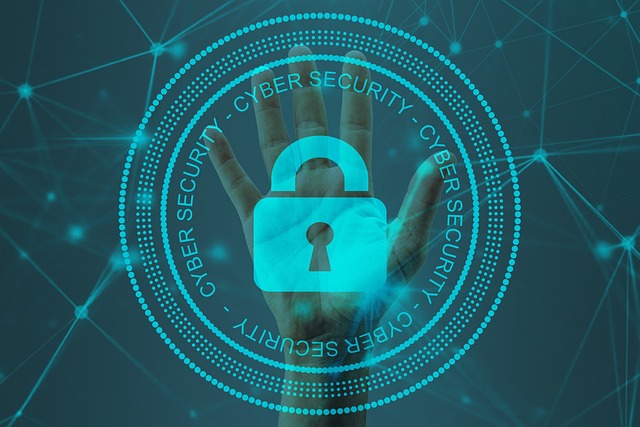
Encouraging Report of Suspected Phishing Attempts
Encouraging individuals to report any suspicious emails they receive is crucial in the fight against phishing threats. It empowers you to stay vigilant and protect yourself from potential harm.
If you suspect that an email you received may be a phishing email, it is important to report it immediately. Reporting phishing emails not only helps you avoid falling victim to a phishing attack, but it also helps organizations and cybersecurity experts gather valuable information to prevent future attacks.
When reporting a suspicious email, make sure to include as much detail as possible. This includes the sender’s email address, any attachments or links included in the email, and any suspicious or unusual content.
Remember, staying proactive and reporting phishing attempts is a key step in avoiding phishing attacks and keeping your personal information safe.

Reporting Phishing Attacks
When you come across a phishing attack, it’s crucial to report it immediately to your organization’s IT department or security team. They need to be aware of the attack in order to take appropriate action and protect the entire organization.
Additionally, if the phishing attack involves sensitive information or is part of a larger cybercrime, it’s important to report it to relevant authorities such as law enforcement agencies or your country’s cybercrime division.
Reporting these attacks helps in both preventing further damage and catching the perpetrators.
Reporting to the Organization
If you come across a phishing attack, don’t hesitate to report it to the organization. Reporting a phishing email is crucial in protecting yourself and others from falling victim to these scams.
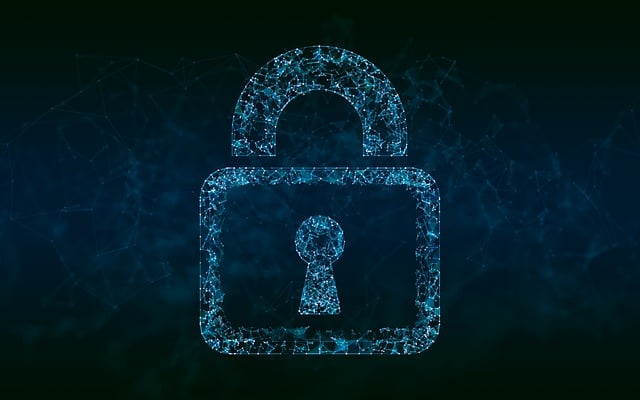
If you receive a suspicious email in your inbox, mark it as spam or report it to your email provider. For example, if you use Outlook, you can easily report phishing emails by clicking on the ‘Report Message’ button.
Additionally, if you receive a phishing email pretending to be from Apple, you should forward it to Apple’s dedicated email address for reporting phishing attempts.
By reporting these emails, you not only help the organization take action against the attackers but also contribute to the overall fight against phishing scams.
Reporting to Relevant Authorities
After reporting the phishing email to the organization, it’s crucial to take the next step and report the incident to the relevant authorities.

By doing so, you not only protect yourself but also help prevent others from falling victim to the same scam or fraud.
Reporting to the authorities ensures that the incident is documented and investigated properly, increasing the chances of catching the perpetrators and shutting down their operations.
Remember, phishing attacks are not isolated incidents, but part of a larger network of cybercriminals targeting unsuspecting individuals.
By reporting to the authorities, you contribute to the collective effort of combating cybercrime and protecting the online community.

Don’t hesitate to reach out to your local law enforcement agency or cybercrime reporting center.
Together, we can make a difference in the fight against phishing attacks.
Real-Life Examples of Phishing Attacks
In this section, we’ll explore real-life examples of phishing attacks and their impact. You’ll discover high-profile phishing incidents and how they affected individuals and organizations.
We’ll discuss the lessons that can be learned from notable phishing cases, helping you better understand the tactics used by attackers and how to protect yourself against them.

High-Profile Phishing Incidents and Their Impact
One cannot underestimate the profound impact high-profile phishing incidents have had on individuals and organizations alike. The rise of sophisticated phishing attacks, such as phishing emails, Microsoft email scams, Apple ID scams, Amazon scam emails, and LinkedIn scams, has left a trail of financial losses, stolen personal information, and damaged reputations.
These incidents have shaken people’s trust in online platforms and raised concerns about the security of their personal data. The consequences of falling victim to a phishing attack can be devastating, leading to financial ruin, identity theft, and even the compromise of sensitive corporate information.
As a result, individuals and organizations have become more vigilant in identifying and avoiding phishing attempts, implementing stronger security measures, and educating themselves about the latest phishing techniques.
The impact of high-profile phishing incidents serves as a stark reminder of the importance of staying alert and taking proactive steps to protect oneself and one’s organization from these malicious attacks.

Lessons Learned from Notable Phishing Cases
Now that you’ve seen the impact of high-profile phishing incidents, it’s crucial to understand the lessons learned from these notable cases.
One important lesson is to be cautious of PayPal scam emails or any suspicious emails asking for personal information. These phishing emails often use clever tactics to deceive individuals into divulging their sensitive data.
Another lesson is to be aware of spear phishing emails, which are highly targeted attacks that appear to come from a trusted source.
It’s essential to report phishing attempts immediately to the appropriate authorities, as this helps in preventing others from falling victim to these scams.

By studying and understanding the lessons learned from notable phishing cases, you can better equip yourself to spot and avoid these malicious attacks in the future.
Recap
To recap, let’s remember that staying vigilant against phishing attacks is crucial in the digital age. The smallest oversight can lead to catastrophic consequences. Phishing attacks, often disguised as scam emails, aim to deceive individuals into revealing sensitive information or downloading malicious files.
By familiarizing yourself with the anatomy of a phishing attack, you can better spot and avoid them. Always be cautious when clicking on links or downloading attachments from unfamiliar sources, as these could be potential phishing attempts. If you receive a suspicious email, report phishing immediately to the relevant authorities.
Remember to never share personal or financial information through email. Legitimate organizations will never ask for it in this manner. By staying informed and practicing good cybersecurity habits, you can protect yourself and your data from falling victim to phishing scams.
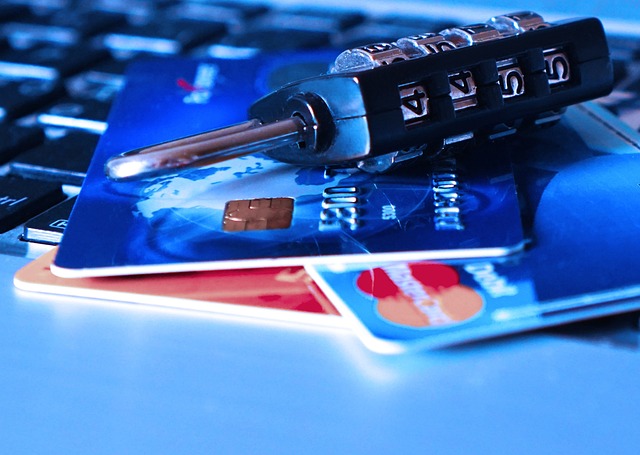
Stay alert and avoid phishing at all costs.
Frequently Asked Questions
How can I report a phishing attack?
To report a phishing attack, you should immediately forward the suspicious email or message to your email provider’s abuse department. They will investigate and take appropriate action to protect other users from falling victim to the attack.
Are there any legal consequences for engaging in phishing attacks?
Engaging in phishing attacks can lead to serious legal consequences. You may face criminal charges, including fines and imprisonment. It is important to remember that phishing is illegal and can cause significant harm to individuals and organizations.
Can phishing attacks be prevented completely?
You can’t prevent phishing attacks completely, making it crucial to stay vigilant. In fact, a staggering 91% of all cyberattacks start with a phishing email, highlighting the importance of being cautious and practicing safe online habits.

What should I do if I accidentally clicked on a phishing link?
If you accidentally clicked on a phishing link, immediately disconnect from the internet, run a full antivirus scan, change your passwords, and monitor your accounts for any suspicious activity. Report the incident to your bank or any relevant service provider.
How can I protect my personal information from being compromised in a phishing attack?
To protect your personal information from being compromised in a phishing attack, be cautious of suspicious emails or messages, avoid clicking on unknown links, regularly update your security software, and educate yourself on the latest phishing tactics.
Conclusion
In conclusion, you’ve learned how to spot and avoid phishing attacks like a pro. By understanding the anatomy of a phishing email and identifying suspicious websites, you can stay one step ahead of cybercriminals.
Educating and training employees is crucial in creating a strong defense against these attacks. Remember, reporting phishing attacks is essential in protecting yourself and others.

So stay vigilant, stay informed, and stay safe in the ever-evolving world of cybersecurity.
Ransomware Attacks: What They Are and How to Protect Yourself








